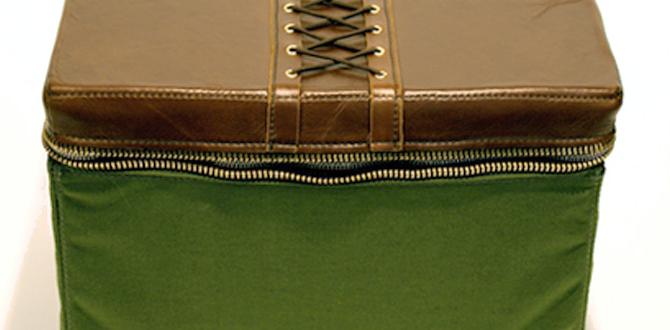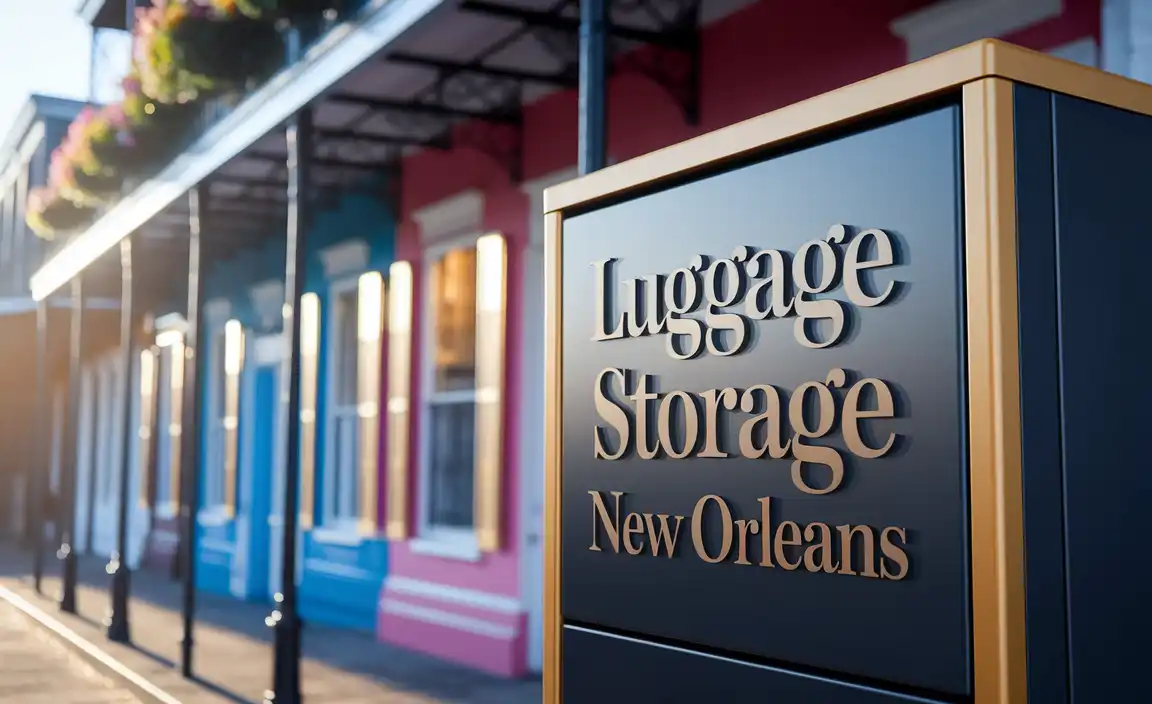Planning a trip to Beirut without the overwhelming crowds? This essential guide maps out a serene experience, focusing on hidden gems, off-peak times, and smart navigation to discover the city’s charm in peace. Experience Beirut’s rich culture and history comfortably.
Beirut, a city buzzing with life, can sometimes feel a little overwhelming. If you’re dreaming of exploring its vibrant streets, ancient sites, and delicious food scene without the jostling crowds, you’re in the right place. It’s totally possible to experience the magic of Beirut at your own pace, discovering its soul in a more relaxed way.
This guide is designed to help you find those quieter moments, enjoy popular spots before the rush, and uncover local favorites that offer a more intimate feel. Get ready to uncover a new side of Beirut, a side filled with calm and discovery, all while keeping your comfort and peace of mind a top priority.
Why a No-Crowds Itinerary for Beirut?
Beirut is a city of contrasts, a place where history meets modernity and a palpable energy fills the air. While this energy is part of its allure, experiencing it at leisure, without feeling rushed or overwhelmed, can significantly enhance your trip. A no-crowds itinerary is perfect for those who:
- Prefer a more immersive and relaxed travel experience.
- Want to capture stunning photos without photobombers.
- Are traveling with young children or individuals who need more personal space and comfort.
- Appreciate the chance to have more meaningful interactions with locals.
- Are seeking to discover less-touristed but equally captivating aspects of the city.
This approach allows you to savor the moments, engage with the culture more deeply, and create lasting memories in comfort.
Timing is Everything: When to Visit Beirut for Fewer Crowds
The season and even the day of the week can make a huge difference in how crowded Beirut feels. By choosing your travel dates wisely, you can often avoid the peak tourist seasons and find yourself with more room to explore.
Best Times to Visit
- Spring (March to May): The weather is pleasantly mild, with blooming flowers adding to the city’s beauty. This is a fantastic time to explore before the summer heat and the main tourist influx.
- Autumn (September to November): Similar to spring, autumn offers comfortable temperatures and fewer crowds than the summer months. The city cools down, making outdoor exploration a delight.
Times to Be Mindful Of
- Summer (June to August): This is peak tourist season. Expect warmer weather and larger crowds at popular attractions.
- Major Holidays and Festivals: Local holidays and international festivals can draw significant crowds. It’s wise to check a Lebanese holiday calendar before booking.
Daily Timing for Attractions
Even during busier periods, you can strategize your day:
- Mornings (Early): Arriving at popular sites right when they open is often the best way to beat the rush. Many museums and historical sites open around 9 or 10 AM.
- Weekdays: Generally, weekdays are less crowded than weekends, especially around major landmarks.
- Late Afternoons: Some attractions might see a lull in visitors a few hours before closing, though this can vary.
Getting Around Beirut Smartly
Navigating a city can be a source of stress, especially when you’re trying to avoid crowds. Beirut offers several transportation options, and choosing the right one can contribute to a more peaceful journey.
Public Transport Options
- Taxis and Ride-Sharing: This is a popular and convenient option. Services like Uber and Careem are widely available. It’s advisable to book via an app to ensure fixed pricing and avoid potential haggling. Traveling during off-peak traffic hours (avoiding morning and late afternoon rush hours) will make your journeys quicker and less crowded.
- Service Taxis: These are shared taxis following fixed routes. While very affordable and authentic, they can be crowded and might not be the most comfortable for everyone, especially those seeking a no-crowds experience.
- Buses: Beirut has a bus system, but routes can be complex for visitors, and buses can get very crowded during peak times.
Walking and Private Tours
- Walking: For areas like Downtown Beirut, the Corniche, or parts of Gemmayzeh and Mar Mikhael, walking is a fantastic way to explore at your own pace. Stick to early mornings or late afternoons to avoid the midday heat and crowds.
- Private Tours: Consider hiring a private guide or driver for specific days. This allows you to customize your itinerary, move at your own pace, and gain insider knowledge without being part of a large group. It’s an excellent way to ensure comfort and efficiency.
Tips for Comfortable Travel
- Download Offline Maps: Services like Google Maps allow you to download maps for offline use, which is incredibly helpful if you get patchy internet service.
- Plan Your Routes: Knowing your route beforehand, especially for taxis, can save time and reduce anxiety.
- Stay Hydrated: Always carry a reusable water bottle, especially during warmer months. You can refill it at cafes and hotels.
Beirut No-Crowds Itinerary: A Sample Plan
This itinerary focuses on experiencing Beirut’s highlights while minimizing contact with large groups. It balances iconic sights with quieter discoveries, perfect for a more serene exploration.
Day 1: History, Art, and Serene Evenings
- Morning (9:30 AM – 12:30 PM): Sursock Museum
Start your day at the Sursock Museum, a beautiful art museum housed in a stunning Italianate villa. Arrive shortly after it opens to enjoy the art and architecture in a peaceful setting. The museum often has fewer visitors in the morning, allowing for a more contemplative experience of its Lebanese and international collections. - Lunch (12:30 PM – 1:30 PM): Quiet Cafe in Achrafieh
After the museum, find a local cafe in the Achrafieh district. Look for smaller establishments off the main streets for a more relaxed lunch. Try a traditional Lebanese mezze like hummus or tabbouleh. - Afternoon (1:30 PM – 4:00 PM): National Museum of Beirut
Head to the National Museum of Beirut. While it’s a UNESCO World Heritage site and a must-see, arriving in the early afternoon can sometimes mean fewer tour groups. Focus on the Phoenician period and the stunning mosaic floors. The museum’s layout allows for self-paced wandering. For more information on Lebanese heritage, the UNESCO Lebanon page offers valuable context. - Late Afternoon (4:00 PM – 6:00 PM): Wander through Hamra District
Explore the lively Hamra street, known for its shops and cafes. While it can get busy, it’s vast enough to find quieter corners. Browse bookstores and enjoy the city’s pulse at your own speed. - Evening (7:30 PM onwards): Dinner in Gemmayzeh (early)
Gemmayzeh street is famous for its restaurants and nightlife. To avoid the late-night crowds, opt for an earlier dinner. Many restaurants open around 7:00 PM, allowing you to enjoy a delicious meal in a more relaxed atmosphere before the street truly comes alive.
Day 2: Coastal Charm and Cultural Immersion
- Early Morning (9:00 AM – 11:00 AM): Raouché Rocks (Pigeon Rocks)
Visit the iconic Raouché Rocks very early. The soft morning light is perfect for photos, and you’ll likely have the Corniche promenade and viewpoint almost to yourself. This is a peaceful way to experience one of Beirut’s most famous natural landmarks. - Mid-Morning (11:00 AM – 1:00 PM): Beirut Corniche Stroll
Continue your leisurely stroll along the Beirut Corniche. Enjoy the sea breeze and the views of the Mediterranean. This long, picturesque walkway is best enjoyed with fewer people, especially in the morning. - Lunch (1:00 PM – 2:30 PM): Seaside Restaurant with a View
Find a cafe or restaurant along the Corniche or slightly inland with outdoor seating. Enjoy fresh seafood while watching the gentle waves. - Afternoon (2:30 PM – 5:00 PM): Mohammad Al-Amin Mosque & Martyrs’ Square
Visit the stunning Mohammad Al-Amin Mosque. Its blue-domed grandeur is impressive, and visiting in the early afternoon can offer a quieter experience for reflection and photography. Afterwards, take a walk through the nearby Martyrs’ Square, a historical heart of the city. The sense of open space here can feel calming. - Late Afternoon (5:00 PM – 7:00 PM): Explore Nejmeh Square (Star Square)
Wander around Nejmeh Square, the heart of Beirut’s downtown reconstruction.admire the Lebanese Parliament building and the clock tower. It’s a beautiful area to absorb the city’s modern architectural blend with its historical past. - Evening (7:30 PM onwards): Dinner in Mar Elias or Hamra (quieter spots)
For dinner, consider exploring some of the less hectic dining areas in neighborhoods like Mar Elias or seeking out more intimate, family-run AUB area eateries. These often offer authentic Lebanese cuisine without the overwhelming buzz of more central spots.
Day 3: Local Flavors and Hidden Treasures
- Morning (9:00 AM – 11:00 AM): Souks of Beirut (early visit or specific sections)
While the reconstructed Souks of Beirut can be busy, visiting right at opening allows for a more serene experience. Focus on the architecture and the different themed areas known for their curated boutiques and cafes. Alternatively, for a more traditional feel without the bustle, consider seeking out older, smaller souks in less central areas if accessible. - Mid-Morning (11:00 AM – 1:00 PM): Armenian Quarter (Bourj Hammoud)
Venture into Bourj Hammoud, Beirut’s vibrant Armenian quarter. This area is a treasure trove of artisan workshops, jewelry makers, and authentic Armenian bakeries and restaurants. It has a unique, bustling yet intimate atmosphere that feels worlds away from the city center. It’s a great place to find unique souvenirs. For a taste of the community, explore its craft shops and local eateries. - Lunch (1:00 PM – 2:30 PM): Authentic Armenian Cuisine in Bourj Hammoud
Enjoy a delicious and authentic Armenian lunch in Bourj Hammoud. Many family-run restaurants offer hearty meals in a warm, unpretentious setting. - Afternoon (2:30 PM – 5:00 PM): Beit Beirut Museum/Exhibition Space
Visit Beit Beirut, also known as the Barakat Building. This symbolic building, a witness to the Lebanese Civil War, now serves as a cultural space and museum. Its powerful history and relative quiet make for a profound and reflective afternoon visit. The exhibitions often require a thoughtful pace. - Late Afternoon (5:00 PM – 7:00 PM): Relax at a Rooftop Cafe
Find a rooftop cafe with a view, perhaps in the Downtown area or Achrafieh. Enjoy a coffee or a refreshing drink as the sun begins to set, offering a peaceful panoramic view of the city. - Evening (7:30 PM onwards): Farewell Dinner in a Peaceful Neighborhood
For your final dinner, choose a restaurant in a less frequented but well-regarded neighborhood. Ask your hotel or a local for recommendations for a charming, quiet spot where you can reflect on your Beirut adventures in comfort.
Comfort and Essentials for Stress-Free Travel
Traveling comfortably, especially when aiming for a no-crowds experience, means being prepared. This includes having the right personal items that ensure ease and dignity.
Packing Smart for Comfort
- Lightweight, Breathable Clothing: Choose fabrics like cotton and linen that are comfortable in Beirut’s climate.
- Comfortable Walking Shoes: You’ll be doing a good amount of exploring, so supportive footwear is key.
- Sun Protection: A wide-brimmed hat, sunglasses, and high SPF sunscreen are essential.
- Reusable Water Bottle: Staying hydrated is crucial.
- Small Backpack or Crossbody Bag: For carrying essentials like water, snacks, a camera, and personal items.
Personal Care Considerations for All Travelers
For any traveler, especially those who prioritize comfort and discretion, having personal care essentials readily available can make a world of difference. This is where planning ahead for specific needs, like those requiring adult or child diapers, can transform a potentially stressful situation into a manageable and comfortable one.
- Adult Diapers/Protective Underwear: For longer excursions, travel days, or simply for peace of mind, discreet and high-quality adult diapers or protective underwear offer security and comfort. Look for brands known for absorbency and a slim fit, ensuring they are undetectable under clothing. This allows for longer periods of exploration without worry. Websites like NorthShore Care Supply offer a wide range of these products, often with detailed reviews to help you choose the best option for your needs, focusing on skin health and leakage protection.
- Child Diapers: For families traveling with young children, ensuring a sufficient supply of comfortable and reliable diapers is paramount. Opt for brands that are known for skin-friendliness and excellent absorption, especially for extended travel periods or when access to specific brands might be limited. Travel-sized packs or disposable diaper bags can help manage space and hygiene on the go.
- Wipes and Hand Sanitizer: Always useful for quick clean-ups, especially important when out and about, and especially when managing personal care needs.
- Travel-Sized Toiletries: Keeping your personal hygiene routine simple and efficient with travel-sized items.
By proactively managing these personal care aspects, travelers can focus entirely on enjoying Beirut’s rich experiences without added anxiety, ensuring every moment is comfortable and convenient.
Hidden Gems and Local Favorites
To truly experience Beirut without the crowds, venturing off the beaten path is key. These spots offer authentic experiences and a more tranquil atmosphere.
Lesser-Known Museums and Galleries
Dar El-Nimer for Arts and Culture: This cultural center and exhibition space often hosts interesting showings with fewer crowds than larger institutions.
AUB Archaeological Museum: Housed within the American University of Beirut campus, this museum is one of the oldest in the Middle East and offers a quiet, scholarly dive into regional history.
Quiet Neighborhoods to Explore
Achrafieh (beyond the main malls): Wander through its residential streets, discovering local bakeries and small shops.
Mar Elias: This area offers a glimpse into a more local side of Beirut, with good street food and a less touristy vibe.
Food Experiences
Man’oushe Bakeries: Seek out local bakeries for fresh man’oushe (a Lebanese flatbread with toppings like za’atar or cheese) for a quick, delicious, and authentic meal.
Mouneh (Preserves) Shops: Especially in areas like Bourj Hammoud, you can find shops selling traditional Lebanese preserves, pickles, and sweets, offering a taste of home cooking.
Tables for Quick Reference
To help you visualize and plan, here are a couple of handy tables.
Best Times to Visit Beirut for Fewer Crowds
| Season | Pros | Cons |
|---|---|---|
| Spring (March-May) | Pleasant weather, blooming nature, fewer tourists. | Can still have occasional rain showers. |
| Autumn (September-November) | Comfortable temperatures, clear skies, great for exploration. | Days start getting shorter. |
| Summer (June-August) | Longer daylight hours, vibrant atmosphere. | Hot weather, peak tourist season, higher prices. |
| Winter (December-February) | Fewest crowds, cooler weather, potentially lower prices. | Can be cold and rainy; some outdoor activities less enjoyable. |
Sample Daily Itinerary Overview
| Day | Morning Theme | Afternoon Theme | Evening Theme |
|---|




